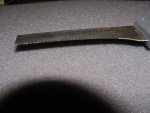cbrian4
0
- Joined
- Dec 24, 2007
- Messages
- 309
- Points
- 0
Im having big trouble getting this diode out of the heatsink, i've tried sawing and using the screwdriver to split it but to no evail, can someone please help? BTW this is on the infrared for practice but its exactly the same heatsink.






